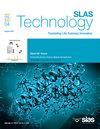Simulation of predicting atrial fibrosis in patients with paroxysmal atrial fibrillation during sinus node recovery time in optical imaging
Abstract
Paroxysmal atrial fibrillation is a common arrhythmia, and its development process and prediction of the degree of atrial fibrosis are of great significance for treatment and management. Optical imaging technology provides a new means for non-invasive observation of atrial electrical activity. The aim of this study is to investigate the predictive effect of sinus node recovery time on the degree of atrial fibrosis in patients with paroxysmal atrial fibrillation, and to provide a basis for the application of optical imaging technology in the study of atrial fibrosis. The study collected clinical and optical imaging data from a group of patients with paroxysmal atrial fibrillation, and used statistical analysis methods to investigate the relationship between sinus node recovery time and the degree of atrial fibrosis. The research results indicate that there is a significant correlation between the recovery time of the sinus node and the degree of atrial fibrosis, that is, there is a positive correlation between the prolonged recovery time of the sinus node and the aggravation of atrial fibrosis. SNRT can serve as an effective indicator for evaluating atrial matrix and can be applied to predict recurrence after catheter ablation of paroxysmal atrial fibrillation. Shortening SNRT through catheter ablation can become an important predictor of effective catheter ablation.

 求助内容:
求助内容: 应助结果提醒方式:
应助结果提醒方式:


